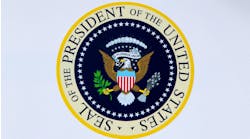Beware These 4 Common EPA Emissions Labeling Issues
Much attention has been paid recently to new regulations under the Clean Air Act governing greenhouse gas emissions. However, EPA continues to pursue emissions violations with respect to other pollutants that it has regulated for decades, such as nitrous oxides and particulate matter. EPA has focused its enforcement in this regard on imports of “non-road” mobile sources, which include a wide variety of diesel and gas-powered engines, vehicles and equipment, such as chainsaws, weed trimmers, dirt bikes, marine vessels and large industrial forklifts and bulldozers. Increasingly, EPA has looked to emissions labels as an initial basis for enforcement actions at the border.
An emissions label is the primary means by which manufacturers inform consumers and regulators that the engines in their products are either: (1) in a “certified” configuration, i.e., are constructed and certified by EPA to emission standards currently in effect; or else (2) are allowed to be in the United States, either temporarily or permanently, under an exemption from certification. The label contains important information about the engine family and power category to which the engine or equipment belongs, the model year and the date of manufacture. All of this information is important to determining whether the engines or equipment are required to meet emission standards and, if so, which standards they are required to meet, and when.
Almost without exception, manufacturers may not sell non-road engines or equipment unless they have been properly certified or exempted from certification and labeled accordingly. Likewise, imports of such products must bear labels showing that they are certified by EPA to current emission standards or else are exempt from those standards. Importers must also file EPA Form 3520-21 at the time of importation and affirmatively declare that the goods are properly certified or exempted from certification, and labeled in accordance with the applicable certification or exemption.
Even where engines and equipment are properly certified, manufacturers and importers alike can face significant penalties if emissions labels fail to meet specific requirements. Some of the most common labeling issues that manufacturers and importers face are described below.
Label not Placed on Engine/Equipment at the Right Time
Many emissions regulations require that an emissions label or labels be placed on a regulated engine or piece of equipment at a particular time. For example, EPA regulations governing diesel-powered forklift engines require that the emissions label be put in place “at the time of manufacture.” For engines or equipment built entirely in one factory, this may not be difficult. But if more than one manufacturer works on the engine before it is complete, it may be impossible for the first manufacturer in the chain to place the emissions label before sending the engine to another company for completion or installation in a forklift body. In such cases, EPA may require manufacturers to place temporary labels on incomplete engines and then replace them with permanent labels once assembly or installation is complete.
In any case, the product must have the required emissions label in place prior to introduction into commerce. For imports, this means that the label must be placed prior to importation into the United States, regardless of whether the product has been sold by the manufacturer to someone else. It is not enough that labels be shipped along with the product; they must be placed on the engine in the proper manner, in the proper location and with the proper language, before importation. Failure to do so subjects both the original manufacturer and the importer of record to liability for any labeling violations or any underlying violation of emissions standards.
Timing issues may also arise regarding labels for engines and equipment that are covered by an exemption from certification. For example, a manufacturer may be eligible to participate in a program in which it is allowed to sell or import products that meet out-of-date emission standards for a limited, transitional period of time after new emission standards come into effect. However, EPA requires eligible manufacturers to provide notice of their participation in the program prior to selling or importing any goods covered by the program. If the manufacturer fails to provide this notice, any imported transitional product is subject to seizure at the border, even if it is correctly labeled.
Label is not “Permanent”
EPA at times requires emissions labels to be “permanent.” It can be difficult to determine whether a label meets this requirement. EPA has stated, for example, that “permanent” emissions labels must be “not removable without being destroyed or defaced.” Moreover, EPA has taken the position that a “permanent” label not be easily removable by hand or with simple hand tools. Metal labels riveted onto a machine would appear to meet this requirement. But if a riveted label could be removed in a single piece with electric tools, it would violate the requirement that it be “not removable without being destroyed or defaced.” These seemingly inconsistent requirements are the result of the dual purposes of EPA’s “permanency” requirement: (1) to ensure that labels do not fall off, making it difficult for consumers and regulators to track them and show that they meet relevant standards; and (2) to ensure that labels cannot be taken off and placed on uncertified or otherwise ineligible engines or equipment, thereby potentially increasing emissions of regulated pollutants within the United States. The challenge for manufacturers and importers, then, is to find a cost-efficient method for producing and attaching labels to a potentially wide variety of products and surfaces to satisfy both of EPA’s policy concerns.
Wrong Language on the Label
The language specified in most of the EPA regulations for emissions labels is mandatory. Every piece of information specified in the regulation must be included, and EPA often specifies exact words and phrases. The amount of required language may result in situations where it is difficult to produce a label that is legible but small enough to be attached to the product in an accessible location. These problems can be compounded for manufacturers selling in California, which has slightly different but mandatory label language as well. Sometimes a manufacturer will need to provide both U.S. EPA and California with draft label language for approval prior to importation to meet the requirements of each jurisdiction.
Removing or Replacing an Emissions Label
EPA requires certain emissions labels to remain on an engine or piece of equipment for its entire operating life. Other labels may remain only while the product is covered by an exemption from current emissions standards. This presents problems for manufacturers whose inventory requirements change over time. To go back to the forklift example, if an uncertified forklift is imported into the U.S. solely for export to another country, it must be covered by an export-only exemption, and it must bear a permanent export-only label. If the manufacturer subsequently decides to keep the forklift for sale in the United States, the forklift would need to be covered by a different exemption. But removing the permanent, export-only label could constitute a violation in and of itself. EPA may require that the forklift be exported before it could be sold or brought back into the country, particularly if the forklift engine does not meet current emission standards.
Enforcement
Labeling violations constitute prohibited “tampering” under the Clean Air Act. Fines can be as high as $37,500 per engine. A company should not assume that it is free from liability for EPA labeling violations if it acts solely as the importer for engines or equipment subject to Clean Air Act standards – importers are considered “manufacturers” for Clean Air Act purposes.
Penalty amounts can vary significantly depending on the size and number of engines or equipment involved, the environmental harm caused by the non-compliance (e.g., causing greater pollutant emissions than otherwise would have been allowed), the type and number of previous violations by a company, and whether the violation was self-reported or was discovered as part of a routine compliance audit.
A manufacturer or importer may take steps to mitigate applicable penalties by voluntarily disclosing labeling issues to EPA, and by taking steps to correct them. For example, an importer should inform EPA of the incorrect labeling (and any incorrect import declaration), stop incoming shipments of incorrectly-labeled goods, and cease shipping any such goods already in the United States. EPA will generally mitigate penalties by at least 50% wherever a manufacturer or importer makes a voluntary disclosure, and 100% mitigation is available in some circumstances. Disclosures should be made promptly to the EPA regional office where the affected facility or port of entry is located.
Conclusion
EPA emissions labeling requirements are not to be taken lightly. Non-road manufacturers should ensure that their engines and equipment include the right labels, at the right times and in the right places before sending them out the factory door. Similarly, non-road importers should ensure that their products meet all labeling requirements prior to importation so that they can avoid potentially significant delays and costly enforcement at the border.






